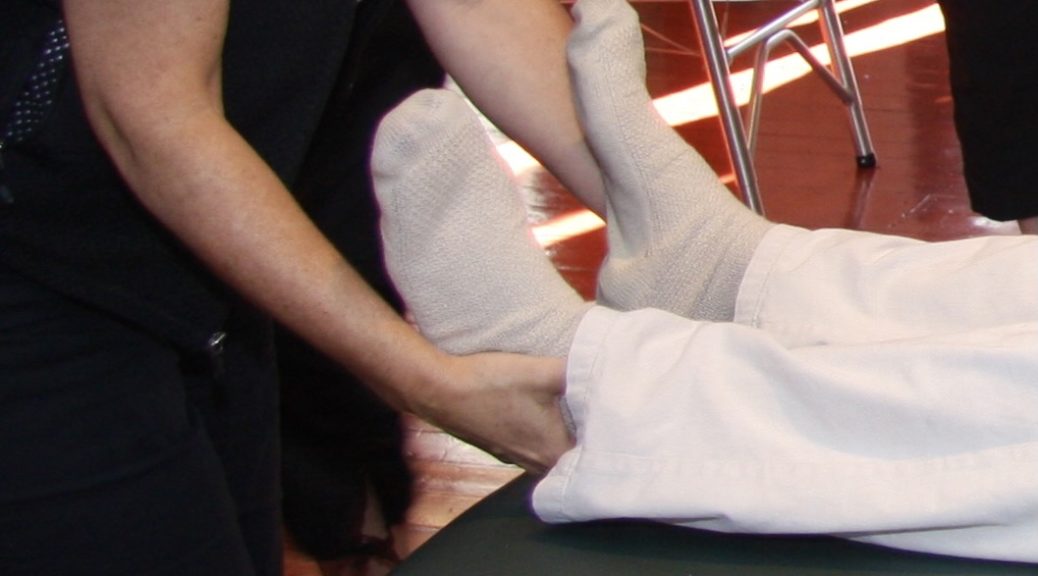This is the fifth and last in the series of articles looking at the variety of ways we can use the Half Moon Vector (HMV) through the legs. It’s a continuation of the question explored in Part 4…
How far up in the client’s body can you connect with your HMV through the legs?
In the previous article, we looked at how far up in the client’s body you can connect as a function of the practitioner’s skill. You can read that article here. Now we will explore when the issue may be due to imbalances in the client.
As you may recall, an imbalance between energy and structure can inhibit energy from moving freely through structure between heaven and earth when the person is standing or between the skull and the feet if a person is lying on the table. The implication is that the further up the body one can connect, the more connected between heaven and earth this person might be once they are standing.
How do you obtain the information?
Because the information you are seeking here is how far up you can connect, the thing to pay attention to is which parts of the client’s body you are able to engage and where it stops. During the first HMV, it’s important to simply observe, rather than trying to change what you are feeling by doing something additional or something different. You will get much more information by placing all your attention on your observation.
Use all your senses to observe. If you can only connect as far as the hips, what is the quality of what’s stopping you? I once felt connected as high as my client’s dorsal hinge, yet that “stop” felt like a steel band. I observed it and filed the information away until my next HMV. Staying in your sensory experience is most helpful, rather than attempting to analyze or plan your response. Trust the imbalances will be addressed simply by doing the protocol. It works!
How can you use this information to guide your sessions?
Using the example above, where the “stop” was in the dorsal hinge, I might pay particular attention to the dorsal hinge when balancing the Sacroiliac Joint–Dorsal Hinge area. I also might see if there is a corresponding imbalance in the sacroiliac joints as we know the two areas are energetically connected. If my orientation is from a Zero Balancing Expanded (ZBX) organs perspective, I might evaluate the person’s diaphragm, liver or stomach. In this client example, I did find an issue in her diaphragm and I chose some of the diaphragm ZBX fulcrums. When I introduced the second HMV, I was able to connect up to her neck but not past. This both confirmed that the session had been effective thus far and that there was more to attend to.
There are two additional, very important points. First, if you choose to use your HMV to evaluate how far up you can connect, please pay attention to the same thing in the second and third HMVs. This way you will be able to track changes through the session. Second, note I did not conclude from the HMV that the issue was in my client’s diaphragm. I only concluded that I needed to evaluate the dorsal hinge area, including her diaphragm. If her diaphragm had been clear, I would have chosen different fulcrums.
How might you improve your skills?
Every week, choose one or two clients to focus on. Pay particular attention to how the 1st, 2nd and last HMVs feel. Evaluate more closely when you address the imbalanced area. Have fun and let me know how it goes!

